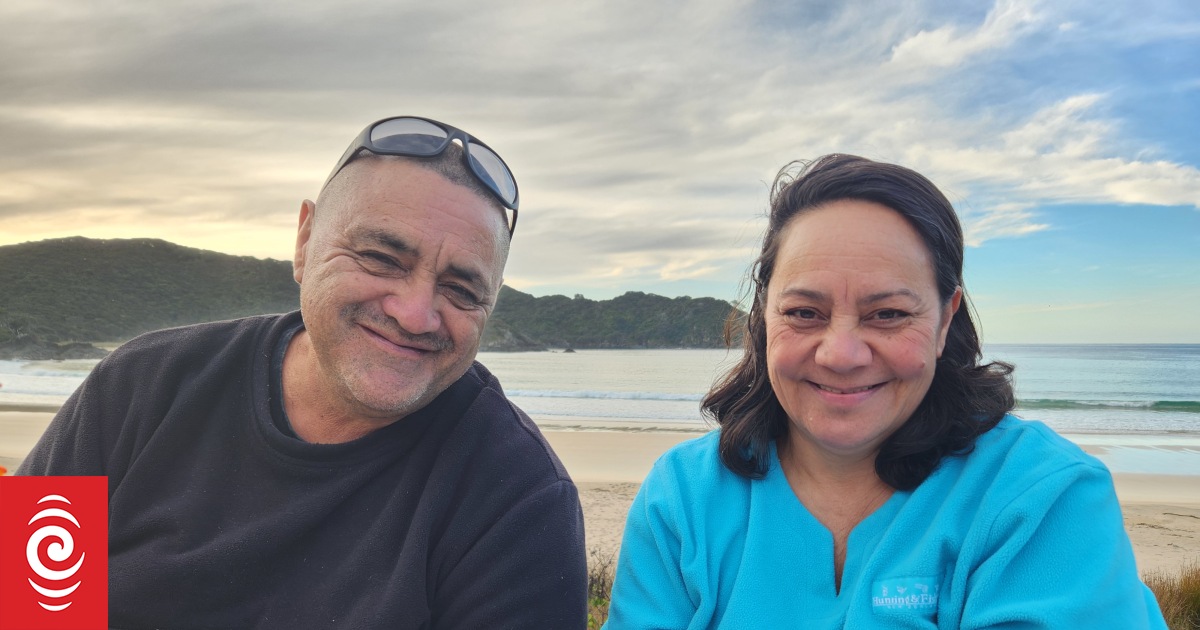In the Far North a rough road snakes its way through bush between the harbours of Mangonui and Whangaroa on the region’s eastern coast.
After a while the road dips steeply down to the coastline and beautiful Taemaro Bay.
Here, there are a few off-grid homes dotted among the pōhutukawa trees and in one of them you’ll find Sandra and Alfonso Heihei.
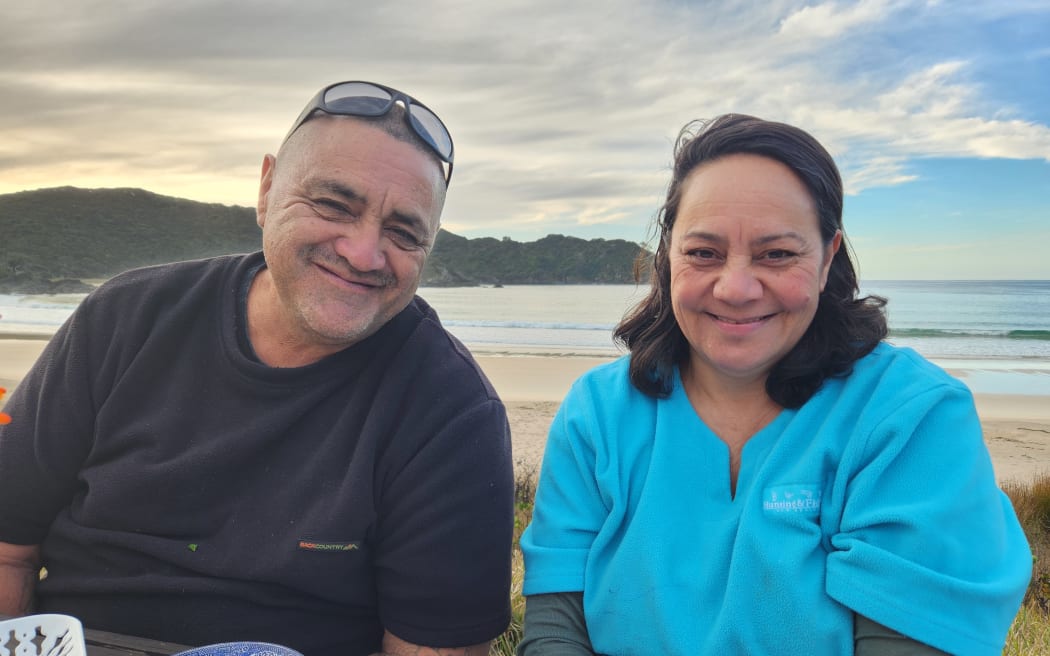
Alfonso and Sandra Heihei
Photo: RNZ/Sally Round
On the beach of this remote scallop-shaped cove you might find the couple walking the dog or having a cup of tea on the beach, just metres from their house.
Alfonso (Ngāpuhi) is the great grandson of a whaler who jumped ship near Kerikeri, to whom he can trace his native American roots.
Sandra (Ngāti Kahu ki Whangaroa) can trace her roots 16 generations back to Te Māmaru, the waka carrying migrants which settled this area.
Taemaro was once a busy place and Sandra knows it well – where the food gardens, the māra kai, once were, where her tūpuna lived – the pā kainga – and where the whalers landed their catch, a shingly bay where you can still see the ship nails hammered into the rocks.
Each little inlet and hilltop has a name.
“There’s always a kōrero to a name and a meaning.”
“Underneath the scrub you would see platforms and terraces and pits and that’s where the old people used to live,” she told Country Life, pointing out areas to her left and right now covered in vegetation.
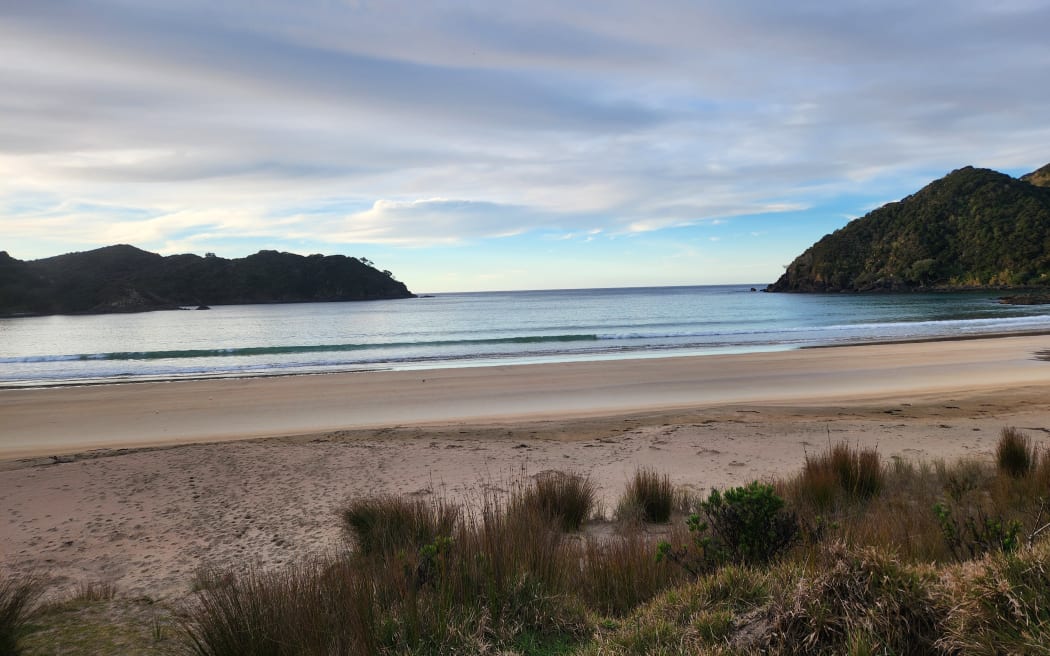
Several former pā sites overlook the bay
Photo: RNZ/Sally Round
The dunes forming a platform on the edge of the golden sand were formed by a tsunami in the 1800s, and used for storing kumara and rīwai on beds of fern, she said.
“It’s a place where the old people used to do their living really, their mahi to live. They grew their food, they did their gardening, they harvested their korari, their flaxes, and they just lived and breathed the land that’s here.”
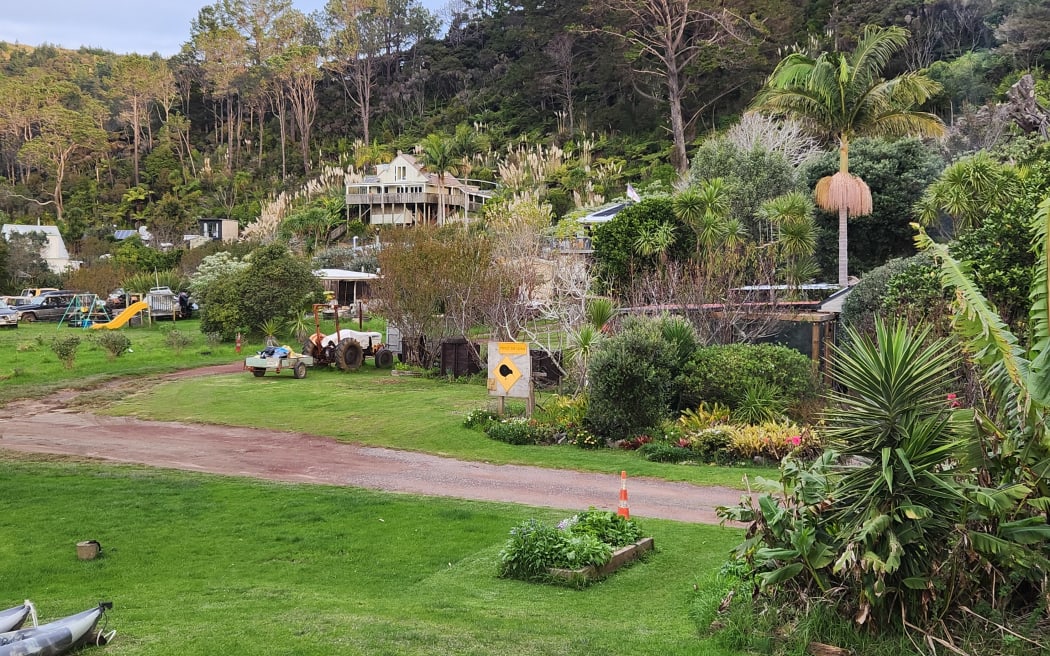
Taemaro Bay
Photo: RNZ/Sally Round
The majority of their land was taken, apart from land reserved for them in 1865. A marae was built “so the old people could have a voice” to try to protect their burial sites, their food gardens, their resources.
The Catholic Church became integral to the community, Sandra said, and a church and school were built too and later moved to near Kaeo where there were more resources for the children and the community.
Everything used to be done in a sustainable manner and she is saddened to see commercial longliners constantly out fishing.
The couple have witnessed the depletion of kaimoana during their 35 years back home in the bay and they try to only fish according to the cycles of the moon like their tūpuna, their ancestors, did.
“In the old days the old people only fished on the moon, on the maramataka. They only put their nets out at certain times. They didn’t leave them out for days in the water. All those things and those practices aren’t respected any more … and that’s really hard.”
She has fond memories of her tūpuna boiling up the jug and laying out the china for visitors just as she did for Country Life.
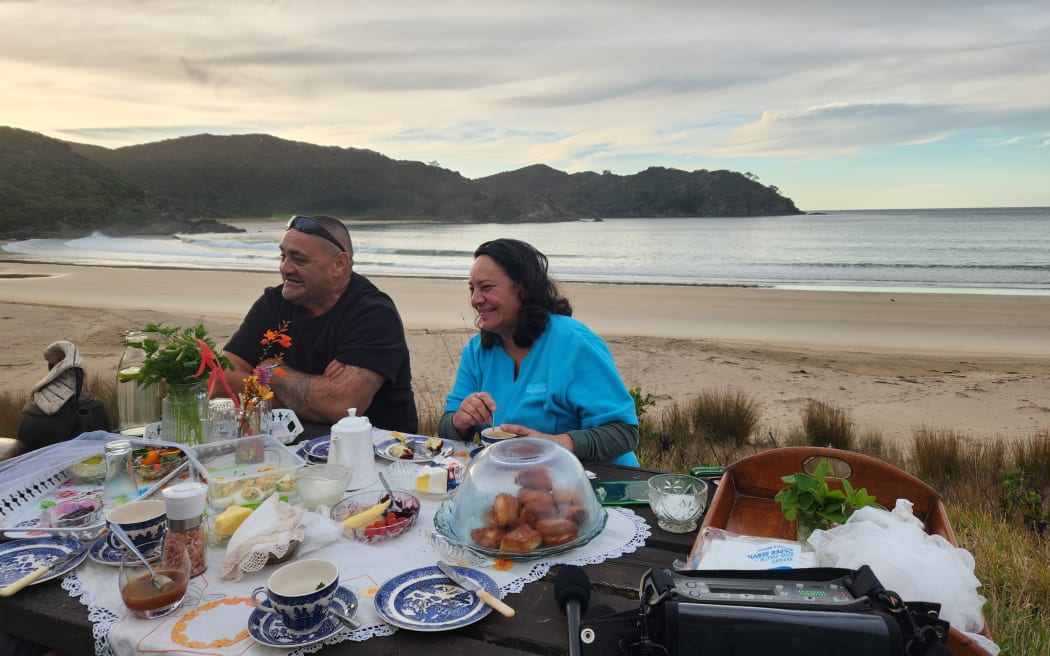
Alfonso and Sandra Heihei welcoming Country Life to the whenua with home-made produce
Photo: RNZ/Sally Round
Sandra has several governance roles and has been active in her marae and iwi. With internet connections, she is able to work remotely in the bay.
But her main role, she says, is to transfer everything she knows to her children and grandchildren, “the values of this place.”
“It’s what sustained our tūpuna and generations before them.
“I appreciate the hard living they had, making things out of nothing and surviving.”
“I see myself as a kaitiaki, ahi kā, someone who stays home to keep the fires burning, someone who’s here to manaaki, manaaki people who come, because that’s what the old people used to do.
“Sometimes I think they did that too much. They were too kind, too nice, because they had so much taken from them, but I will continue to maintain what they did because that’s very important and I love doing that.”

